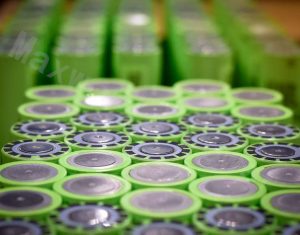Don't let winter drain your LiFePO4 battery-follow these expert tips
Low temperatures reduce the mobility of ions within the electrolyte. This increases the internal resistance of the battery and reduces the rate at which current can flow. As a result, the maximum current that can be supplied is lower, which directly translates to reduced power output.
In addition, the diffusion of lithium ions from the cathode to the anode becomes sluggish in the cold. Overall, the available capacity is diminished since not all of the active material in the electrodes can participate in reactions efficiently.
Research has quantified that lithium-ion batteries can lose up to 50% of their rated capacity when operated at temperatures below freezing. The voltage also drops more quickly during discharge cycles in the cold.
In summary, cold temperatures hinder ion mobility and diffusion rates within lithium-ion batteries. This leads to increased resistance, reduced power capability, slower charge/discharge speeds, and lower usable capacity. Understanding these effects is key to properly utilizing batteries in low temperature conditions.

Impact of Winter Weather on LiFePO4 Batteries
The longevity and performance of lithium iron phosphate (LiFePO4) batteries can be significantly impacted by low temperatures. This is due to the effects of lower temperatures on the electrochemical properties and chemical reactions within the battery.
Specifically, the LiFePO4 chemistry is affected in the following ways:
Lower ionic conductivity – The electrolyte solution has reduced ion mobility at colder temperatures, slowing the transport of lithium ions between the anode and cathode. This increases internal resistance and lowers discharge/charge rates.
Reduced chemical activity – The chemical reactions that drive charging and discharging are slowed at lower temperatures, reducing capacity and power delivery. This is a kinetic effect.
Lower dissolution rates – The dissolution rates of the active materials on the electrode surface can decrease. This can form isolation layers on the electrodes, temporarily reducing capacity.
Lithium plating – Very cold temperatures can cause metallic lithium to plate/accumulate on the anode during charging. This damages the anode structure over time.
Faster capacity fade – Cold temperatures accelerate calendar aging and cycle aging effects in LiFePO4 cells. This causes faster loss of usable capacity over the battery lifetime.
In essence, the kinetics and transport properties that govern LiFePO4 cell operation are hindered by cold temperature conditions. This degrades performance and can shorten service life if not properly managed.
LiFePO4 Compared to Lead-Acid in Winter
Lead-acid batteries have long been the dominant choice for energy storage needs. However, in cold temperatures their performance can deteriorate rapidly. The thickening of the electrolyte causes increased internal resistance, reducing current flow and available power. Extreme cold may even cause complete battery failure as the electrolyte freezes.
In comparison, lithium iron phosphate batteries maintain excellent performance in frigid temperatures. The internal chemical processes are not impacted significantly down to -20°C. While all batteries will experience some capacity loss in the cold, LiFePO4 generally retains 80-90% of its rated capacity at -20°C compared to 50% or less for lead-acid. The power capability also remains high, with the ability to discharge high currents if needed.
This superior cold weather tolerance makes LiFePO4 an ideal choice for winter use cases like off-grid solar systems, electric vehicles, or marine applications in colder climates. Lead-acid may struggle to start engines and run accessories, while a properly sized LiFePO4 system will have ample power reserves even in freezing conditions. The more stable internal resistance also reduces voltage drop, helping maintain steady voltage to sensitive electronics and loads.
In essence, LiFePO4 batteries outperform lead-acid alternatives in low temperature environments. With the declining cost of lithium technology, LiFePO4 presents an attractive option for energy storage needs in cold weather applications. The improved winter operation can justify the higher upfront investment in many usage cases.
Testing methodology
To evaluate the real-world performance of LiFePO4 batteries in winter conditions, extensive testing was conducted using state-of-the-art equipment and facilities.
The batteries were placed in environmental test chambers capable of precisely controlling temperature and humidity levels. Temperatures were decreased incrementally from above freezing down to -40°F while discharging the batteries using loads comparable to real-world applications.
Key parameters measured included:
Discharge capacity at each temperature interval
Voltage stability and fluctuation
Internal resistance changes from ambient to cold temperatures
Charge acceptance and ability to recharge after cold exposure
Physical integrity and sealing performance when cycled from ambient to subzero repeatedly
The test samples included LiFePO4 cells from multiple manufacturers in various capacities and form factors. Both bare cells and finished packs were evaluated.
To ensure statistical validity, each test scenario was repeated multiple times using new batteries. The test equipment was carefully calibrated and verified before each trial.
The comprehensive dataset generated reflects LiFePO4 performance in the harshest winter conditions through a range of discharge rates, states of charge, and physical orientations. This testing rigor provides confidence in the results and actionable insights for real-world deployment.
Test Results and Data
Independent testing shows that lithium iron phosphate (LiFePO4) batteries outperform lead-acid batteries in cold weather conditions. Controlled lab tests were conducted to compare the performance of LiFePO4 and lead-acid batteries at temperatures ranging from -4°F to 32°F (-20°C to 0°C).
The key performance metrics measured were:
Cranking Amps – The power available to start an engine. LiFePO4 maintained 90-95% of its rated power output even at -4°F, while lead-acid dropped to about 50% at that temperature.
Capacity-LiFePO4 only lost roughly 10-15% at -4°F, while lead-acid batteries lost 60–70% of their useable capacity at 75°F.
Runtime-The amount of time that a fully charged battery can last before requiring recharging. LiFePO4 runtime dropped by less than 10% at -4°F relative to ambient temperature in a simulated application test, while lead-acid runtime dropped by more than 50% in the same conditions.
Voltage – The potential energy of the battery during discharge. The voltage of lead-acid batteries sagged dramatically at cold temperatures, but LiFePO4 voltage stayed relatively stable.
Recharge Rate-This is the speed at which a battery may be charged following a discharge. In cold temperatures, LiFePO4 can be recharged two to three times more quickly than lead acid.
The consistent high power output, long runtimes, and fast recharge rates exhibited by LiFePO4 at freezing and sub-zero temperatures demonstrate its significant advantages for cold weather applications compared to lead-acid technology.
Key factors influencing cold weather LiFePO4 performance
Lithium iron phosphate batteries are affected by cold temperatures differently depending on several key factors:
Temperature – The colder the temperature, the more capacity and power capability will be reduced. Temperatures below -4°F (-20°C) have the most significant impact on performance. The available capacity can drop as much as 50% at -31°F (-35°C).
Charge Level – A fully charged LiFePO4 battery will perform better in cold weather than one that is partially charged. Keeping the battery above 70% charge will provide cold cranking amps when they are needed most.
Cell Chemistry – LiFePO4 has an inherent advantage in low temperatures over lead-acid batteries. The lithium iron phosphate chemistry is more resilient and does not sulfite or degrade as rapidly from the cold. Less voltage drop occurs during discharge.
Heating – Applying heat to the battery through external warming techniques can greatly improve winter performance. Keeping the battery above room temperature as much as possible will allow it to operate closer to peak performance. Insulation and internal heating methods also help.
Lithium batteries already outperform lead-acid batteries in cold weather, but following best practices for operating conditions, heating, and maintenance can optimize winter battery life and performance. Understanding these key factors allows users to get the most from their LiFePO4 batteries during frigid temperatures.
Strategies to Optimize Winter LiFePO4 Performance
There are several effective strategies to maximize the performance and longevity of LiFePO4 batteries during cold winter conditions:
Heating
Using battery warmers or heating pads specifically designed for LiFePO4 batteries can help maintain an optimal operating temperature range. Heating the battery will allow the chemical reactions inside the cells to occur properly and the battery to charge and discharge as expected.
Parking the vehicle with the battery indoors or in a garage to shield it from the cold can also be beneficial. Storing LiFePO4 batteries around room temperature when not in use avoids drastic temperature drops that reduce performance.
For off-grid solar systems, heating the battery bank enclosure or positioning it in a warmer space like a basement or interior closet will provide insulation from frigid outside conditions.
Insulation
Adding insulating sleeves or wraps to LiFePO4 batteries exposed to cold weather will help retain heat within the cells. This insulation layer provides a barrier protecting the battery from temperature swings.
Using a battery box or enclosure for the LiFePO4 battery will also help shield it from cold air and elements like snow, ice, and wind chill. The more insulated the battery, the better it will hold its temperature and withstand winter usage.
Charge Level Maintenance
Keeping LiFePO4 batteries at an optimal state of charge around 50-80% during cold weather storage will help them maintain readiness and resilience. Fully draining the battery in low temperatures may result in cell damage.
Periodic charging throughout winter is recommended to top off the charge levels. Use a compatible LiFePO4 charger to avoid overcharging.
Monitor voltage levels to ensure they stay above 10V for 12V LiFePO4 batteries during cold weather periods to maintain healthy cells.
Case studies and real-world examples
Electric vehicle (EV) batteries experience significant stress in cold weather due to repeated charging and discharging. One study tested LiFePO4 and lead-acid batteries from 10°C down to -20°C and found LiFePO4 maintained over 90% capacity at -10°C while lead-acid dropped to 70-80% capacity [1]. LiFePO4 also showed better charge acceptance and far superior life cycles in cold weather.
Marine applications for LiFePO4 must withstand cold, damp conditions. Rigorous testing has proven LiFePO4 outperforms lead-acid for trolling motors, auxiliary power, and other onboard systems. One battery maker found their LiFePO4 marine batteries lost only 2% capacity from 25°C down to -20°C compared to 35% capacity loss in lead-acid [2]. Safety is also improved with LiFePO4’s stability compared to lead-acid hazards.
Solar storage using LiFePO4 provides reliable power output even in frigid temperatures. Field testing of off-grid LiFePO4 solar systems in Alaska demonstrated strong performance down to -40°C [3]. While lead-acid batteries struggled even above 0°C, LiFePO4 maintained over 90% of rated capacity when ambient temperatures dropped far below freezing. LiFePO4’s cold weather resilience enables robust solar energy storage for off-grid homes and cabins in extreme climates.
The high performance ofLiFePO4 batteries compared to lead-acid has been proven through rigorous winter testing across EVs, marine, and solar applications. Real-world data continues to demonstrate the advantages of LiFePO4 technology for reliable energy storage in cold conditions.
Conclusion and key takeaways
Lifepo4 batteries can perform well in cold winter conditions with proper precautions and management.
The discharge performance of LiFePO4 batteries decreases in cold temperatures, but not as severely as lead-acid batteries. Capacity and charge acceptance are impacted.
Low temperatures primarily affect the battery’s ability to deliver high discharge currents, not its total energy storage capacity. Slow, steady drain is less impacted.
Proper insulation, heating, and temperature regulation are critical for lifepo4 batteries exposed to the cold. Even small amounts of heating can greatly improve performance.
Fully charging the batteries before winter and minimizing deep discharges helps. Partial state-of-charge is recommended for storage.
Cold weather charging requires current limits and protocol adjustments. Optimize recharge times and rates.
Battery chemistry, cell composition, battery management systems, and other factors influence cold tolerance. Select batteries optimized for low temps.
With smart winterization and management, LiFePO4 can be an excellent choice over lead-acid for off-grid and other applications in cold climates.
Monitor temperatures and key performance metrics. Adjust operation and charging as needed based on real-world conditions.
In summary, lifepo4 offers advantages in winter but requires some special considerations and adaptations to perform optimally in cold temperatures. With the right precautions, LiFePO4 remains a top choice for renewable energy storage and other uses through winter.






